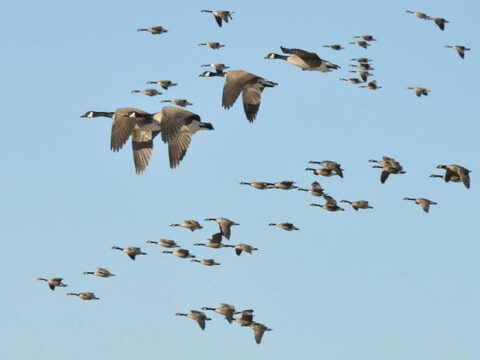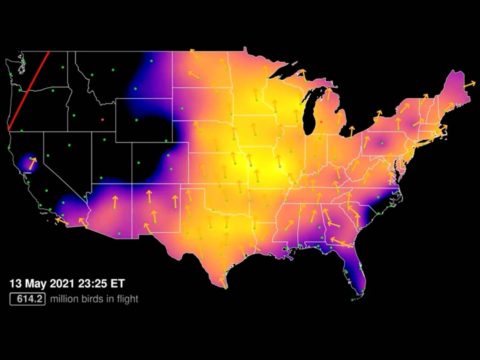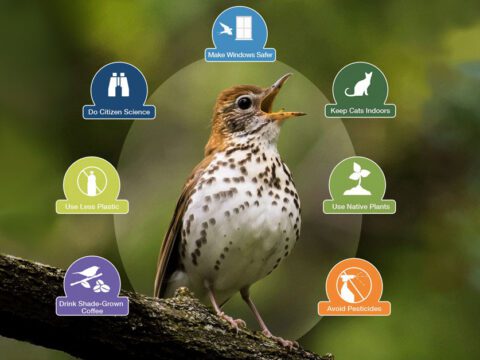Science at a Migration Hotspot Called Helgoland
By Wesley Hochachka October 1, 2010
I was told to keep my travel plans flexible because bad weather could keep me from getting on or off the island. There’s not much more than half a square mile of land here, and even that has been split in two since the 1700s, when a storm washed away the connecting land. Private cars and bicycles are not permitted. The island is reputed to be the site of the world’s largest non-nuclear explosion, and now I’ve seen the crater.
I am on the island of Helgoland, where I’ve been invited to give a talk at the 143rd meeting of the Deutschen Ornithologen-Gesellschaft—the German Ornithologists’ Society. This island holds a special place in German ornithology, especially this year, which marks the centenary of the first ornithologist officially starting work here. Helgoland is a magnet for tired or lost birds migrating to and from Scandinavia and even farther afield.
This evidence, too, presented itself upon my arrival. Less than a minute after coming ashore, I found that every grassy surface held multiple Meadow Pipits and Chaffinches. After only two days, arrivals and departures are evident: yesterday was a European Siskin day; today I didn’t see a single siskin on my quick walk around the island, but Reed Buntings had appeared.
However, most of the time I’ve been in a dark room watching research presentations. In accordance with the setting, the theme of this meeting is migration, and after two days here I have heard many fascinating stories:
- The “low-tech” method of tracing bird journeys—banding, (as it is known in North America; everywhere else it’s “ringing”) still sheds new light on patterns of dispersal and migration. Wheatears from geographically distinct nesting populations have partially overlapping wintering grounds in Africa. (See yesterday’s post for more news from bird banding.)
- A “high-tech” method involves attaching devices that measure time and light levels to moderately large birds. These devices are called geolocators. From the data, scientists can determine where birds have traveled using the same kinds of calculations as early sailors used when navigating. The technique has been used with many species, including to get a better description of the complex oceanic migrations of Antarctic skuas.
- The “highest-tech” method uses GPS transmitters that relay their locations to satellites—and straight on to scientists—multiple times per day. I heard a fascinating story about how some individual raptors make multiple attempts before they succeed in crossing the Sahara desert in spring. Some individuals in poor condition never survive the crossing, and the ones that take multiple attempts to reach their breeding grounds may fail to nest or even lose territories that they held in previous years. (More on GPS tracking: a recent story in BirdScope about Osprey migration)
- Another focus of migration-related research is navigation. Researchers are testing whether birds recalibrate their internal compasses (which are linked to their left and not their right eyes, by the way) each day based on sensing polarized light (the evidence presented was equivocal).
- Still other researchers are working to understand how songbirds decide when to start journeys across inhospitable areas. They appear to factor in what they know of directions, distance, their own physical condition, and weather conditions. Different bird species in different areas seem to use different rules: tailwinds aren’t always important, for example.
Migration is a research subject that appears to me to be more actively pursued in Europe than in North America, and I am enjoying acquiring a broader understanding of the research that is being done in Germany and nearby countries. Tomorrow, I may get to see the fabled “Helgoland trap” in action.

All About Birds
is a free resource
Available for everyone,
funded by donors like you
American Kestrel by Blair Dudeck / Macaulay Library




